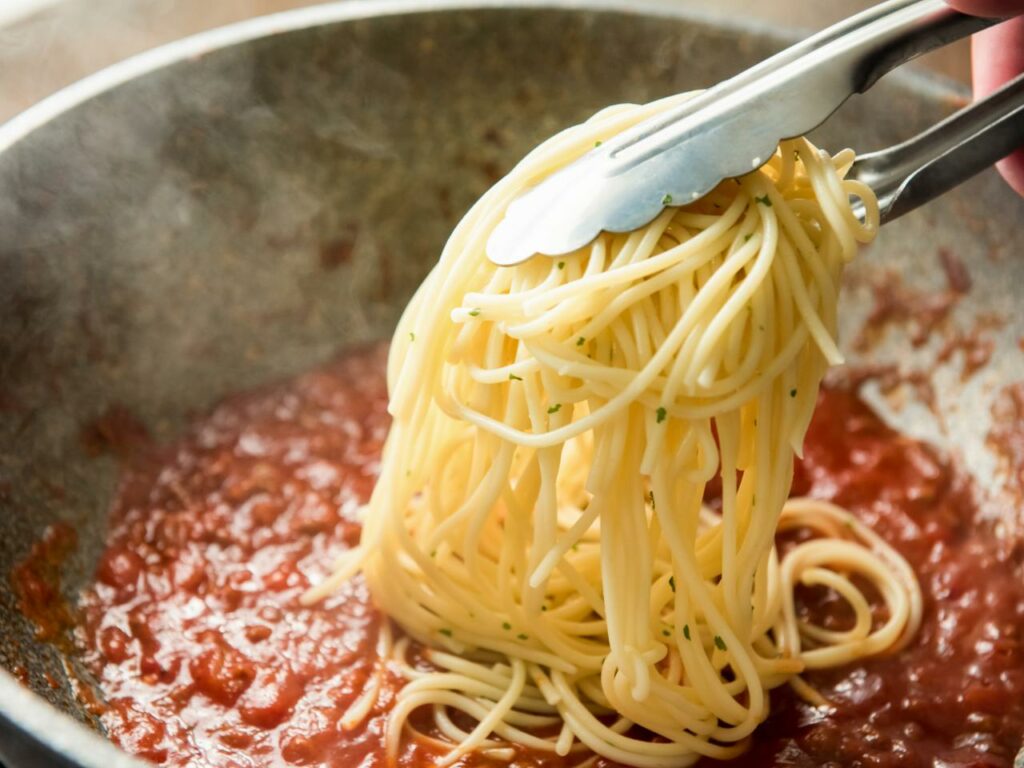How to Cook Pasta – A Comprehensive Guide

Cooking pasta is a fundamental skill in the kitchen that opens up a world of delicious meal possibilities. Whether you’re preparing a quick weeknight dinner or a special dish for guests, knowing how to cook pasta properly ensures it turns out perfectly al dente every time. This comprehensive guide will walk you through the step-by-step process of cooking pasta, covering everything from choosing the right pasta shape, boiling water, adding salt, cooking times, testing for doneness, draining, and finishing with sauces or toppings.
Choosing the Right Pasta
Before you start cooking, consider the type of pasta you want to use:
- Shape: Choose from a variety of shapes such as spaghetti, penne, fusilli, or farfalle, each suited for different sauces and recipes.
- Type: Opt for regular pasta, whole wheat, gluten-free, or specialty varieties based on dietary preferences or needs.
Materials Needed
Gather the following materials before you begin:
- Pasta: Choose your preferred type and amount of pasta.
- Large Pot: Use a pot large enough to hold plenty of water and allow pasta to cook evenly.
- Water: Fresh, cold water to boil the pasta.
- Salt: Enhances the flavor of the pasta; coarse salt is recommended.
- Colander: For draining pasta after cooking.
- Tongs or Pasta Fork: To stir and handle pasta during cooking.
- Timer: Helpful for tracking cooking time.
Step-by-Step Guide to Cooking Pasta
1. Boil Water
- Use a Large Pot: Fill the pot with water, leaving enough room for the pasta to cook without boiling over.
- Add Salt: Generously salt the water (about 1-2 tablespoons per gallon of water) to season the pasta as it cooks.
2. Add Pasta
- Bring Water to a Boil: Place the pot over high heat and bring the water to a rolling boil.
- Add Pasta: Carefully add the pasta to the boiling water, stirring gently to prevent sticking.
3. Cooking Time
- Follow Package Instructions: Refer to the pasta package for recommended cooking times, typically 8-12 minutes depending on the type and thickness of pasta.
- Stir Occasionally: Stir the pasta occasionally to ensure even cooking and prevent clumping.
4. Testing for Doneness
- Taste Test: Periodically test a strand of pasta for doneness starting a few minutes before the recommended cooking time.
- Al Dente: Pasta should be tender yet firm to the bite (al dente). Avoid overcooking, as it will become mushy.
5. Drain Pasta
- Prepare Colander: Place a colander in the sink to drain the cooked pasta.
- Reserve Pasta Water: Optionally, reserve a cup of pasta cooking water for thinning sauces later.
6. Finishing
- Serve Immediately: Toss pasta with your favorite sauce or toppings immediately after draining to prevent sticking.
- Add Sauce: Coat pasta evenly with sauce, whether it’s a simple marinara, creamy Alfredo, or olive oil-based sauce.
- Garnish: Sprinkle with grated cheese, herbs, or freshly ground pepper as desired.
Tips for Perfect Pasta
- Use Plenty of Water: Ensure there’s enough water to cook pasta freely without sticking together.
- Salt the Water: Salting the water adds flavor to the pasta itself rather than relying solely on the sauce.
- Stir Regularly: Prevent pasta from sticking together by stirring occasionally during cooking.
- Reserve Pasta Water: Use reserved pasta water to adjust sauce consistency if needed; it contains starch that helps bind sauces.
- Follow Cooking Times: Check pasta frequently toward the end of cooking time to avoid overcooking.
Common Mistakes to Avoid
- Undercooking or Overcooking: Follow recommended cooking times and taste-test pasta for doneness.
- Not Salting Water: Salting water enhances pasta’s flavor; avoid bland pasta by omitting salt.
- Using Too Little Water: Insufficient water can cause pasta to stick together and cook unevenly.
Conclusion
Cooking pasta is a straightforward yet essential culinary skill that allows you to create a wide range of delicious dishes. By following this guide and mastering the steps for boiling water, adding salt, cooking times, testing for doneness, draining, and finishing with sauces or toppings, you can confidently prepare perfectly cooked pasta dishes every time. Experiment with different pasta shapes, sauces, and toppings to create meals that suit your tastes and preferences. With practice and attention to detail, cooking pasta will become a rewarding part of your culinary repertoire, whether you’re cooking for yourself, family, or friends.




